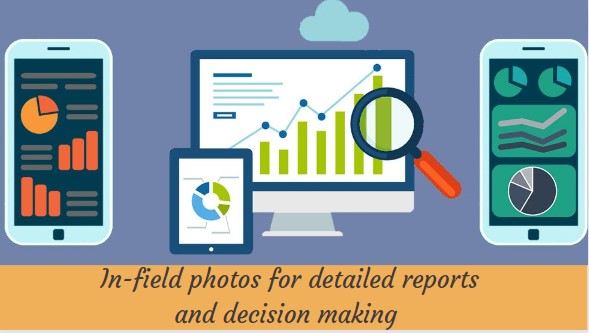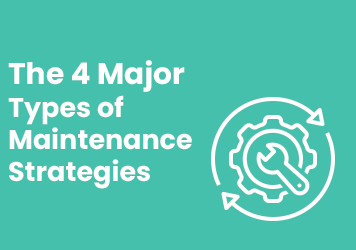
Inspection scheduling software for asset management
Viki Dongare |
13 May 2024 |
07:11 AM
- Exploring the Importance of Inspection Management Software
- Types of Inspections and their Significance
- Utilizing Inspection Templates for Streamlined Operations
- Uploading Checklists for Comprehensive Assessments
- Scheduling Inspections: Optimizing Workflow and Productivity
- Enhancing Inspections with Advanced Features
- Proptor’s inspection scheduling software
- Conclusion

The 4 Major Types of Maintenance Strategies
Madhurima Sanyal 24 Jun 2024 | 11:54 AMLearn about the four major types of maintenance strategies: reactive, preventive, predictive, and reliability-centered maintenance. Understand their benefits, implementation, and how to choose the right strategy for your organization....
Understanding Inspection Scheduling Software
Inspection management software plays a pivotal role in achieving total visibility and control over asset management processes. Achieving this level of visibility is crucial for your businesses aiming to streamline operations and maximize asset performance.
Exploring the Importance of Inspection Management Software
Asset management inspection software offers comprehensive solutions, providing a bird's eye view of asset inspections, maintenance schedules, and compliance protocols, ensuring optimal asset performance and longevity. With the right software, businesses can proactively identify maintenance needs, minimizing downtime and unforeseen issues that could impact operations.
Types of Inspections and their Significance
Inspections includes various categories, each serving a distinct purpose in asset management. Regular inspections ensure asset integrity and compliance with industry standards. Preventive inspections help identify potential issues before they escalate, enabling timely intervention to avoid costly breakdowns or failures.
Routine inspections play a key role in maintaining equipment health, while specialized inspections cater to specific industries or regulatory requirements. Understanding these inspection types is pivotal for effective asset management and longevity.
Utilizing Inspection Templates for Streamlined Operations
Inspection templates within the software offer a structured approach to conducting assessments. These templates act as a blueprint, guiding inspectors through the necessary steps, standardizing the process, and ensuring thorough evaluations. By utilizing these templates, businesses can maintain consistency across inspections, minimizing errors and oversights while optimizing asset inspection management software.
Uploading Checklists for Comprehensive Assessments
Checklists serve as indispensable tools within inspection scheduling software, facilitating comprehensive assessments. By uploading checklists tailored to specific assets or industries, inspectors gain a systematic approach to evaluations.
These checklists encompass vital checkpoints, enabling inspectors to perform in-depth assessments, record observations, and ensure compliance with standards and regulations. The utilization of checklists enhances the accuracy and thoroughness of inspections.
Scheduling Inspections: Optimizing Workflow and Productivity
Efficiently scheduling inspections with dedicated software optimizes workflow and productivity. Inspection scheduling tools enable users to set inspection timelines, allocate resources effectively, and ensure timely evaluations.
By streamlining the scheduling process, businesses can prevent asset downtime, reduce operational disruptions, and maximize the lifespan of critical assets. This optimization of workflow and productivity is crucial for effective asset inspection management software.
Enhancing Inspections with Advanced Features
Leveraging In-Field Photos for Detailed Reports
The inclusion of in-field photos within inspection reports significantly enhances the depth and accuracy of assessments. These photos serve as visual evidence, providing comprehensive insights into asset conditions. By incorporating visual data into reports, inspectors can offer stakeholders a clearer understanding of asset health, facilitating informed decision-making and prioritizing maintenance tasks
Enabling Online Inspection Requests and Scheduling
The ability to request and schedule inspections online offers unprecedented convenience and efficiency. Inspection scheduling software allows seamless coordination between teams and stakeholders by enabling online requests and scheduling. This feature streamlines the process, reducing administrative burdens, and ensuring timely inspections, contributing to enhanced operational agility.
Conducting Mobile Inspections for Flexibility and Efficiency
Mobile inspections empower inspectors with the flexibility to conduct assessments anytime, anywhere. This capability eliminates the constraints of traditional paper-based inspections, enabling real-time data collection and immediate reporting. With mobile device functionalities, businesses can enhance efficiency, expedite decision-making processes, and swiftly address emerging issues, ensuring optimal asset performance.
Simplifying Inspection Reporting Processes
Inspection scheduling software simplifies and streamlines the reporting process by offering user-friendly interfaces and intuitive functionalities. It allows inspectors to swiftly record observations, generate detailed reports, and communicate findings seamlessly. Simplified reporting processes ensure clarity and transparency, facilitating efficient decision-making and fostering better collaboration among stakeholders
Optimizing Route Planning & Scheduling for Inspection Businesses
Route planning and scheduling functionalities embedded within inspection software optimize operational efficiency. These features enable businesses to create optimized routes for inspectors, minimizing travel time and expenses. With optimized scheduling, inspection teams can cover more ground effectively, ensuring thorough evaluations without unnecessary delays.
Understanding Route Planning & Scheduling Software
Route planning and scheduling software empower businesses to create and manage inspection schedules effectively. These tools incorporate geospatial data and algorithmic optimizations to create the most efficient inspection routes. Understanding the capabilities and nuances of these asset management inspection software solutions is instrumental in maximizing productivity and reducing operational costs.
Managing Technicians: Setting Parameters for Efficient Operations
Maintenance management software allows seamless management of technicians by enabling the setting of customized parameters. Supervisors can efficiently allocate tasks based on technicians' expertise and workload capacity, optimizing operational efficiency. By tailoring parameters, such as geographical zones or specific asset expertise, the software ensures that the right technician is assigned to the right task at the right time, streamlining the asset inspection software process.
Real-Time Performance Tracking of Inspection Teams
One of the pivotal features of modern asset management inspection software is its ability to provide real-time performance tracking for inspection teams. Supervisors and managers gain insights into ongoing inspections, monitoring progress, and identifying potential bottlenecks. Real-time tracking ensures that inspections remain on schedule, allowing immediate interventions if deviations arise, ultimately enhancing overall efficiency and ensuring timely completion of tasks.
Enhancing Customer Communication: Adding Proof of Service
The inclusion of a "Proof of Service" feature within inspection scheduling software revolutionizes customer communication. It enables inspectors to record proof of completed tasks, ensuring transparency and building trust with clients. By attaching images, timestamps, or digital signatures to completed inspections, the inspection software ensures clients have tangible evidence of service, instilling confidence in the quality and thoroughness of the inspection process.
Providing Real-Time Service Updates to Clients
In today's fast-paced business environment, clients expect real-time updates on service progress. Inspection scheduling software facilitates this by offering real-time service updates to clients. Whether it's notifying clients about scheduled inspections, updates on ongoing tasks, or instantly sharing completed reports, the software bridges the communication gap, ensuring clients are informed every step of the way. This level of transparency leads to improved client satisfaction and fosters long-term business relationships.
By incorporating these advanced features into equipment inspection software, businesses gain a competitive edge, elevating their asset management strategies for enhanced productivity and informed decision-making. The inspection scheduling software prioritize client communication and real-time updates, asset management processes are streamlined, offering a win-win for both inspectors and clients.
Proptor’s inspection scheduling software
Proptor’s equipment inspection software for asset management represents a paradigm shift in how businesses manage and streamline inspection processes. Proptor’s asset management inspection software is a comprehensive solution designed to transform inspection procedures. With its focus on simplifying reporting, optimizing route planning and scheduling, and enabling online inspection requests and scheduling, Proptor enhances every facet of the asset inspections.
By leveraging in-field photos for detailed reports, offering real-time performance tracking, and enabling mobile inspections for flexibility and efficiency, Proptor provides a comprehensive toolkit to businesses seeking streamlined inspection management.
The software’s user-friendly interface, coupled with its real-time updates and mobile functionality, ensures seamless communication between inspection teams and clients. Proptor’s commitment to enhancing customer communication through proof of service and real-time service updates to clients sets it apart from its contemporaries.
Conclusion
Equipment management inspection software stands as an indispensable tool, offering a comprehensive solution to streamline operations and optimize asset performance. With its ability to proactively identify maintenance needs, provide complete visibility, prevent downtime, and cater to diverse inspection types, this inspection software ensures efficient asset management and longevity of your organization.
By incorporating advanced features like in-field photos, online requests, mobile inspections, and simplified reporting processes, it optimizes workflows, fosters client communication, and enhances operational efficiency. As businesses embrace these functionalities, the asset inspection management software becomes a game-changer, revolutionizing strategies and enriching relationships between inspectors and clients.